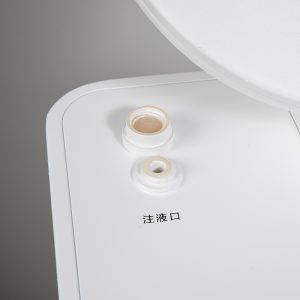Protecting Patient Safety: Effective Anesthesia Machine Equipment Disinfection
Introduction:
In every operating room, the anesthesia machine is a vital component that helps anesthesiologists administer safe and effective anesthesia to patients. However, ensuring the cleanliness and sterility of the anesthesia machine equipment is of utmost importance to prevent the spread of infections and protect patient safety. This article explores the significance of anesthesia machine equipment disinfection and highlights the key steps to maintain a sterile environment.
Importance of Anesthesia Machine Equipment Disinfection:
Proper disinfection of anesthesia machine equipment plays a crucial role in preventing healthcare-associated infections. During surgery, patients are vulnerable to various infectious agents, and any contamination in the anesthesia machine can pose significant risks to their health. By implementing effective disinfection protocols, healthcare providers can reduce the incidence of infections and enhance patient safety.
Key Steps for Anesthesia Machine Equipment Disinfection:
1. Pre-Cleaning: Before disinfection, it is important to pre-clean the anesthesia machine equipment to remove any visible debris or organic matter. This can be done using appropriate cleaning agents or detergents and following manufacturer guidelines.
2. Selecting Disinfectants: Choosing the right disinfectant is essential to effectively kill or inactivate microorganisms present on the anesthesia machine equipment. Ensure that the disinfectant is approved for healthcare use and has proven efficacy against a wide range of pathogens.
3. Disinfection Techniques: Follow the recommended disinfection techniques provided by the manufacturer. Pay careful attention to high-touch areas and surfaces, such as knobs, buttons, breathing circuits, and vaporizers. Use disposable wipes or applicators to ensure proper coverage of all surfaces.
4. Contact Time: Allow the disinfectant to remain in contact with the surfaces for the recommended contact time to ensure maximum effectiveness. This period may vary depending on the type of disinfectant used.
5. Drying: After disinfection, thoroughly dry the anesthesia machine equipment to prevent the growth of any residual microorganisms. This can be done using clean, lint-free towels or air dryers.
6. Regular Maintenance: Establish a regular maintenance schedule for anesthesia machine equipment. This includes routine inspections, repairs, and replacement of any damaged or worn-out parts. Regular servicing ensures optimal performance and reduces the risk of contamination.
Conclusion:
Proper disinfection of anesthesia machine equipment is vital for maintaining a clean and sterile environment in the operating room. By following the key steps outlined above, healthcare providers can effectively prevent the spread of infections and protect patient safety. Regular maintenance and adherence to disinfection protocols are essential for ensuring the longevity and optimal performance of anesthesia machine equipment. Together, let's prioritize patient well-being and create a safe environment for surgical procedures.